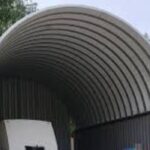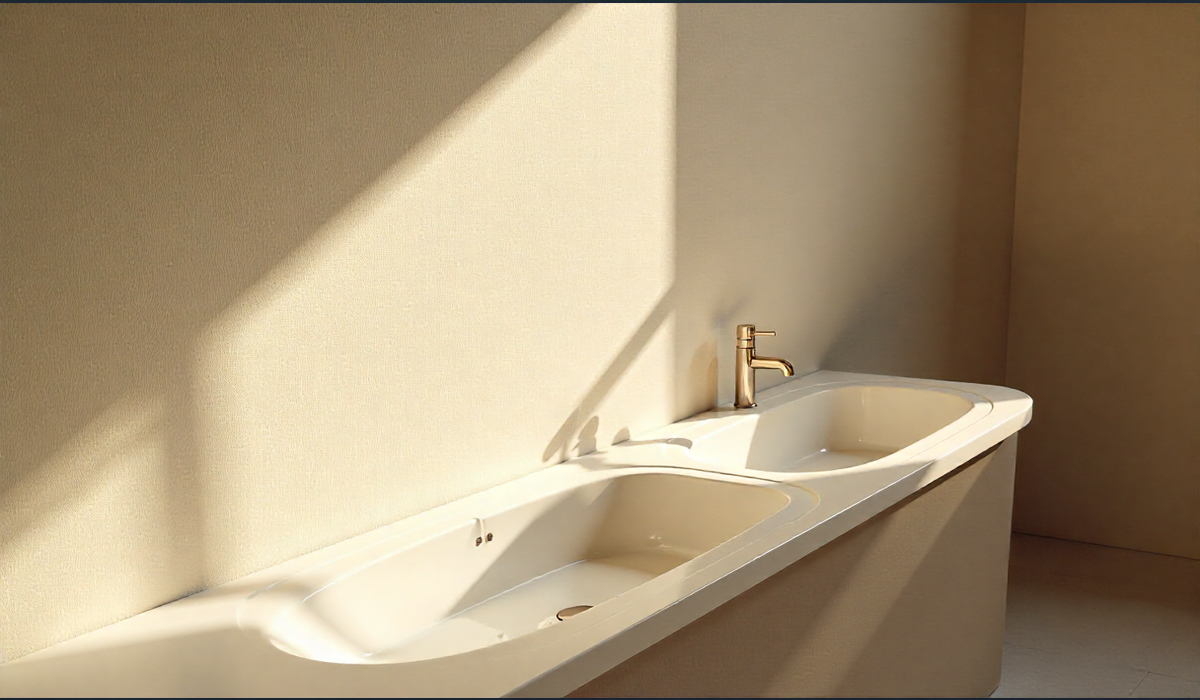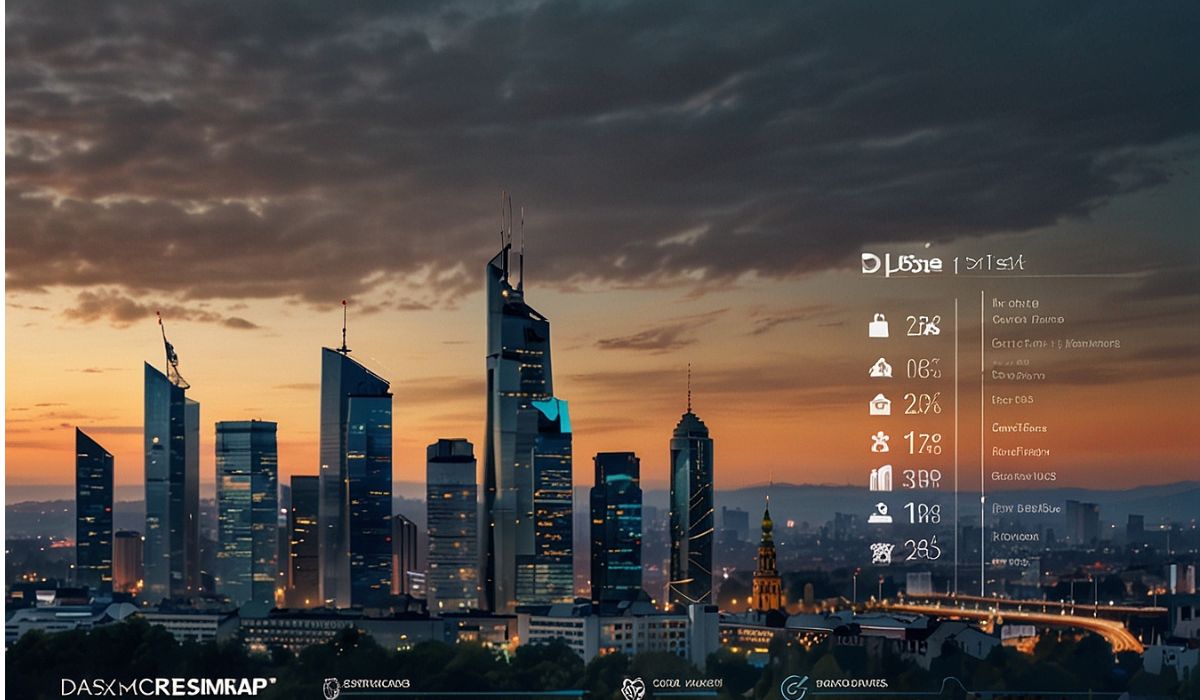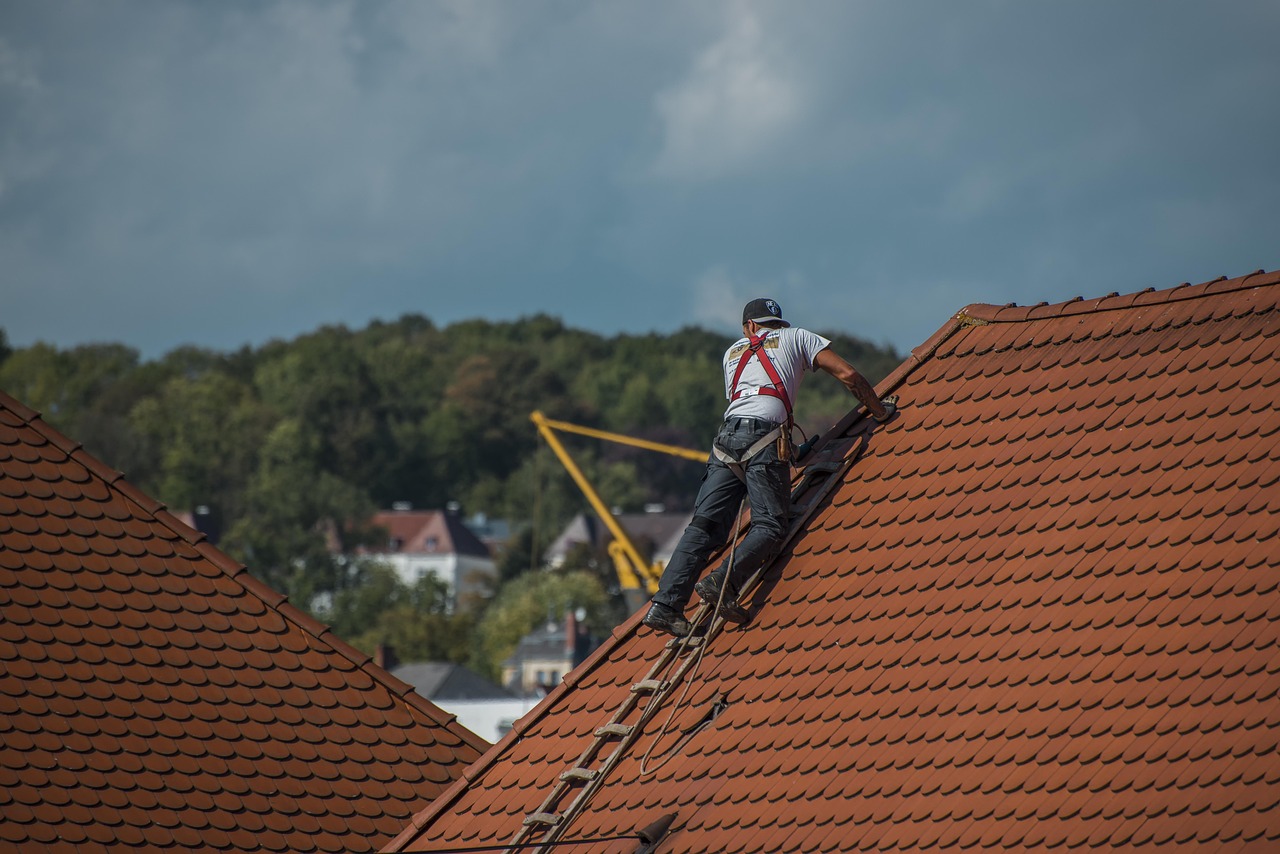Ever run your hand over a wall and been surprised by its cool, velvety smoothness? That silent sophistication, that understated matte perfection – there’s a good chance you’ve encountered something special. In the world of high-end interiors, discerning designers and homeowners are increasingly turning away from predictable paints and embracing the artisanal allure of fine plaster finishes. And right at the forefront? Gessolini. This isn’t your grandma’s lumpy plaster or heavy stucco; it’s a revelation in creating serene, tactile surfaces that elevate any space. But what exactly is this hidden gem, and why is it causing such a stir?
What is Gessolini? Unpacking the Elegance
At its heart, gessolini is a premium, fine-plaster finish crafted primarily from gypsum. Think of it as the haute couture of wall coverings. While traditional plasters might be functional or rustic, gessolini is all about achieving an exceptionally smooth, almost poreless, matte surface. It’s derived from natural minerals, offering an eco-friendlier alternative to many synthetic finishes, yet delivers a look and feel that’s distinctly luxurious.
- The Gypsum Connection: Gypsum, the key ingredient, is a naturally occurring mineral known for its fineness and fire-resistant properties. Gessolini takes this base and refines it further, creating a paste that spreads like dense cream.
- The Finish Difference: Unlike heavily textured Venetian plaster (which it’s sometimes compared to) or the ruggedness of stucco, gessolini’s magic lies in its subtlety. The goal is a flawlessly uniform, non-reflective surface. Imagine the soft, absorbent quality of high-quality drawing paper translated onto your walls – that’s the gessolini effect.
- Artisanal Application: Achieving that perfect gessolini finish is a skill. It’s typically applied in multiple thin layers by skilled craftspeople using specialized trowels. Each layer is meticulously smoothed and sometimes lightly burnished, building up depth and that characteristic velvety feel. This process is more akin to fine art than standard decorating.
Why Choose Gessolini? Benefits Beyond Beauty
So, why opt for gessolini over standard paint or wallpaper? The advantages go far deeper than just its stunning good looks:
- Unmatched Tactile Experience: This is gessolini’s superpower. The smooth, cool-to-the-touch surface is incredibly inviting and adds a unique sensory dimension to a room. It feels substantial and expensive.
- Sophisticated Matte Aesthetic: In a world often dominated by gloss and sheen, gessolini offers a profound, light-absorbing matte finish. This creates a sense of calm, sophistication, and allows architectural details or artwork to truly shine without competing reflections. Brands like Minoterie and Oikos offer exquisite gessolini lines favored by top designers.
- Durability Done Differently: While not indestructible (no fine finish is!), a professionally applied gessolini is remarkably robust. It’s resistant to cracking (thanks to gypsum’s properties) and can last for decades with proper care, far outlasting most painted surfaces. It develops a beautiful patina over time.
- Breathability & Climate Friendliness: Being mineral-based, gessolini allows walls to “breathe,” helping to regulate indoor humidity and reduce the risk of mold or mildew – a significant plus in modern, airtight homes.
- Seamless & Customizable: Gessolini can be applied seamlessly across walls and ceilings, creating a monolithic, cocoon-like effect. Plus, it can be tinted to an almost infinite array of colors during mixing, ensuring a perfect match for any design vision. Think deep, saturated hues or ethereal pastels, all with that signature velvety matte.
- Unique Light Play: The ultra-matte surface diffuses light beautifully, eliminating harsh shadows and hotspots. This creates an incredibly soft, even ambient light that flatters both the space and the people in it.
Where Gessolini Shines: Perfect Applications
Gessolini isn’t just for galleries! Its versatility makes it ideal for numerous settings:
- Residential Refinement: Elevate living rooms, bedrooms (creating a serene retreat), dining areas, and hallways. It’s particularly stunning in master suites and minimalist spaces where texture needs to be subtle.
- Boutique Hospitality & Retail: High-end hotels, luxury boutiques, and exclusive restaurants use gessolini to create an immediate impression of quality and understated luxury that guests can feel. It whispers exclusivity.
- Creative Studios & Offices: Its light-diffusing qualities and calm aesthetic make it perfect for design studios, home offices, or any workspace where focus and a refined atmosphere are key.
- Feature Walls with Depth: While stunning on all walls, gessolini makes an exceptional feature wall. Its subtle depth and texture (or intentional lack thereof) create a focal point without being loud.
- Ceilings as Fifth Walls: Don’t neglect the ceiling! A gessolini ceiling adds immense sophistication and a sense of enveloping comfort.
Gessolini vs. The Rest: Understanding Your Plaster Options
Choosing a wall finish can be confusing. Here’s how gessolini stacks up against common alternatives:
Table: Key Plaster Finishes Compared (Described in Text)
- Gessolini: Primary Base = Gypsum. Finish = Ultra-smooth, uniform matte. Texture = Minimal to none, velvety feel. Best For = High-end refinement, seamless elegance, sophisticated matte, sensory appeal. Complexity = High (Professional application essential). Cost = Premium.
- Venetian Plaster (Marmorino): Primary Base = Lime + Marble dust. Finish = Polished sheen (low to high), visible subtle marbling/texture. Texture = Smooth but with intentional trowel marks/movement. Best For = Classical elegance, depth, light reflection, artisanal patterns. Complexity = High (Skill-dependent for patterns/sheen). Cost = Premium.
- Stucco (Traditional): Primary Base = Cement/Lime/Sand. Finish = Rough, textured, often highly variable. Texture = Coarse, pronounced aggregate. Best For = Exteriors, rustic interiors, heavy durability, Mediterranean style. Complexity = Medium-High. Cost = Moderate to High.
- Tadelakt: Primary Base = Lime. Finish = Highly polished, waterproof. Texture = Very smooth, almost waxy. Best For = Bathrooms, wet rooms, sinks, Moroccan aesthetic. Complexity = Very High (Specialized sealing required). Cost = Premium.
- Standard Drywall/Paint: Primary Base = Gypsum board + Paint. Finish = Variable sheen (flat to gloss), prone to showing imperfections. Texture = Smooth (but can feel thin/cheap). Best For = Cost-effective, quick application, easy DIY, maximum color choice. Complexity = Low. Cost = Low to Moderate.
Getting Gessolini Right: Installation Insights
This isn’t a DIY weekend project. Gessolini demands expertise:
- Wall Prep is Paramount: The substrate (wall surface) must be impeccably smooth, level, clean, and sound. Any imperfection will telegraph through the fine gessolini finish. Skimming or specialized primers are often essential.
- The Artisan’s Touch: Application is a multi-stage process involving specific trowels (often stainless steel) and techniques. Thin layers are applied, dried, and meticulously smoothed or burnished. This requires experience to avoid streaks, ridges, or inconsistent absorption.
- Mixing Matters: Precision in mixing the powder with water (and any integral color) is crucial for consistency across batches and achieving the desired workability and finish.
- Time & Patience: Each layer needs adequate drying time. Rushing leads to failure. A proper gessolini installation is an investment in time and craftsmanship.
- Hire a Specialist: Look for applicators experienced specifically with fine gypsum plasters like gessolini, not just general plasterers. Ask for portfolios and references. Companies specializing in decorative finishes like Stucco Italiano or trained artisans are your best bet.
Living with Luxury: Caring for Your Gessolini Walls
While durable, gessolini needs thoughtful care to maintain its beauty:
- Gentle Cleaning Only: Dust regularly with a soft, dry microfiber cloth or a soft brush attachment on a vacuum. For marks, lightly dampen a clean, soft, lint-free cloth (like microfiber) with only water, wring it out extremely well, and gently dab – never rub hard or use excessive water. Avoid all harsh chemicals, abrasives, or soap-based cleaners. Think of cleaning a delicate suede shoe.
- Avoid Scuffs & Scratches: Be mindful of furniture placement and moving objects. While resistant to normal wear, sharp impacts can dent or mark the surface. Felt pads on furniture legs are wise.
- Repairability: Small dings or scratches can often be spot-repaired by a skilled professional, blending seamlessly into the original finish. Larger damage might require redoing a section. This is where hiring the original installer is beneficial.
- Embrace the Patina: Like fine leather, gessolini develops a subtle character over time. Minor variations or a gentle softening are part of its charm and evidence of its natural, hand-crafted origins. Don’t expect sterile perfection forever.
5 Pro Tips to Embrace the Gessolini Look
Ready to bring this tactile luxury into your home or project? Here’s how to start:
- Seek Inspiration: Visit high-end design showrooms, boutique hotels, or galleries known for their interiors. Feel the walls! Look at portfolios from specialty plaster companies.
- Consult a Designer/Artisan Early: Discuss gessolini during the planning phase. They can advise on suitability, color integration, lighting design (which is crucial!), and connect you with skilled applicators.
- Invest in the Sample: Never choose a color from a chip. Get large sample boards made in gessolini and view them in your actual space at different times of day. See how the light plays on the matte surface.
- Lighting is Key: Gessolini thrives with layered lighting. Combine ambient (soft, diffuse), task, and accent lighting. Avoid harsh downlights directly onto the surface; indirect or bounced light is most flattering. Think wall washers or concealed coves.
- Celebrate the Texture: Pair gessolini walls with contrasting textures – rich wood, nubby linen, sleek metal, soft wool rugs. This interplay highlights its unique smoothness and adds depth.
Gessolini transforms walls from mere boundaries into experiences. It’s an investment in atmosphere, texture, and timeless elegance. Have you ever experienced the unique feel of a fine plaster wall? What draws you most to this kind of finish? Share your thoughts below!
FAQs
- Is gessolini suitable for bathrooms or kitchens?
While breathable and resistant to humidity better than some finishes, gessolini isn’t inherently waterproof like Tadelakt. It’s generally best for low to moderate humidity areas. In kitchens, use it away from direct splash zones; in bathrooms, ensure excellent ventilation. Specific sealers can sometimes be applied, but consult your applicator, as they may alter the matte finish. - How much more expensive is gessolini than high-end paint?
Significantly more. Costs include premium materials and specialized labor. Expect gessolini to cost several times more per square foot than even the best paint job. However, its longevity and unique aesthetic often justify the investment for those seeking unparalleled quality. - Can gessolini be applied over existing painted walls?
Sometimes, but extensive prep is crucial. The paint must be well-adhered, non-glossy (sanded down), and ideally, a specific primer designed as a base for mineral plasters must be applied. Often, stripping back to the substrate or applying a new baseboard is recommended for optimal results and longevity. Your installer will advise. - Does gessolini come in different textures?
The hallmark of true gessolini is its ultra-smooth, uniform matte finish. While subtle variations can occur naturally due to application, it’s not textured like stucco or intentionally marbled like Venetian plaster. Its beauty lies in its refined smoothness. - Is gessolini environmentally friendly?
Yes, generally. Its primary component, gypsum, is a natural mineral. It contains minimal VOCs (Volatile Organic Compounds), especially compared to many paints and synthetic finishes. Its breathability also contributes to healthier indoor air quality. - Can gessolini be used on ceilings?
Absolutely! Gessolini is fantastic on ceilings. Its seamless application creates a beautiful “fifth wall” effect, and its light-diffusing properties make ceilings feel higher and spaces feel more cohesive and enveloping. - How long does a gessolini finish typically last?
With proper application on a sound substrate and good care, a gessolini finish can easily last 20 years or more. Its mineral composition makes it very stable and resistant to the fading and chipping that affect paint. It ages gracefully, developing a subtle patina.
You may also like: Whispers in Stone: The Unforgettable Echo of Ancient Artz










